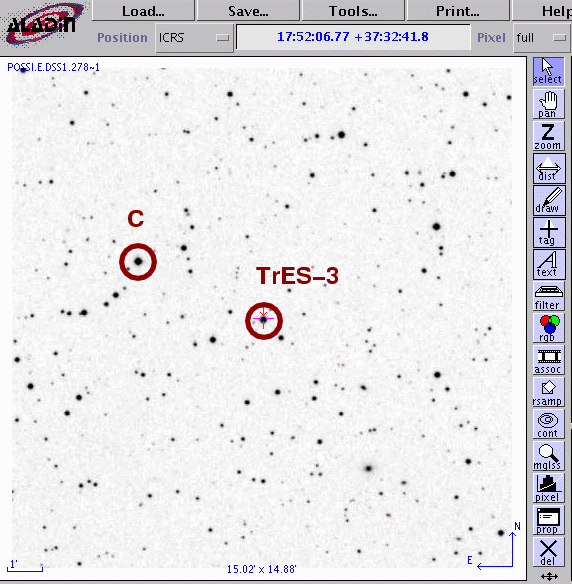
On the night of UT May 04, 2008, the SDSS Photometric Telescope ("PT" for short) took a series of exposures of TrES-3. We detected both ingress and egress.
Notes from the night
This is a chart of the field. TrES-3 orbits the is the bright star indicated by the crosshairs. The star labelled "C" will appear in later graphs.

The host star of TrES-3 has a magnitude V=12.40 according to TrES-3: A Nearby, Massive, Transiting Hot Jupiter in a 31-Hour Orbit .
Following the procedures outlined by Kent Honeycutt's article on inhomogeneous ensemble photometry, I used all stars available in each image to define a reference frame, and measured each star against this frame. You can find the software package used to do the ensemble photometry online; it's free!
The night was okay. The graph below shows the amount by which instrumental magnitudes from each image needed to be shifted to match the ensemble reference. On a clear night, this graph would show a straight horizontal line.
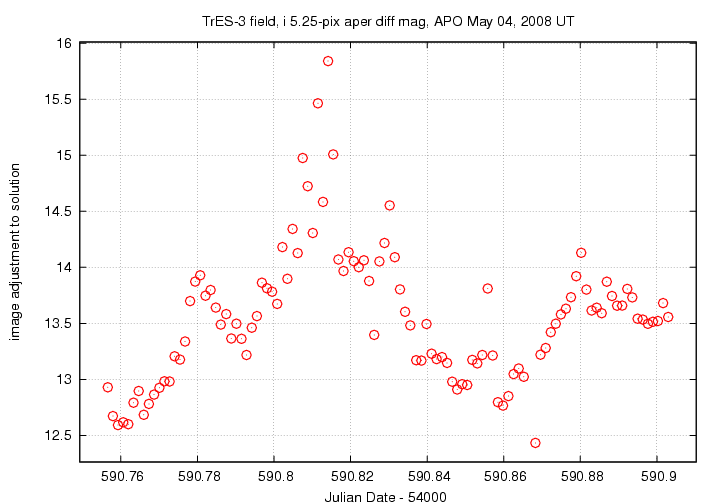
Below is a graph of the scatter in differential magnitude versus magnitude in the ensemble solution.
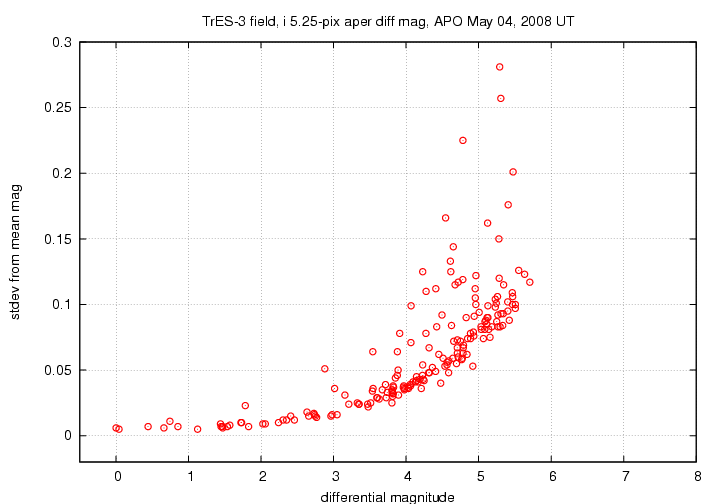
TrES-3 is the star at differential mag 0.74; it shows a small excess of scatter than neighboring stars of the same brightness. The "noise floor" in these measurements is about 0.006 mag -- mediocre. Many of the outliers in the plot above are real variable stars (which were removed from the ensemble solution).
Below are the light curves for the target (green symbols) and four comparison stars in the field.
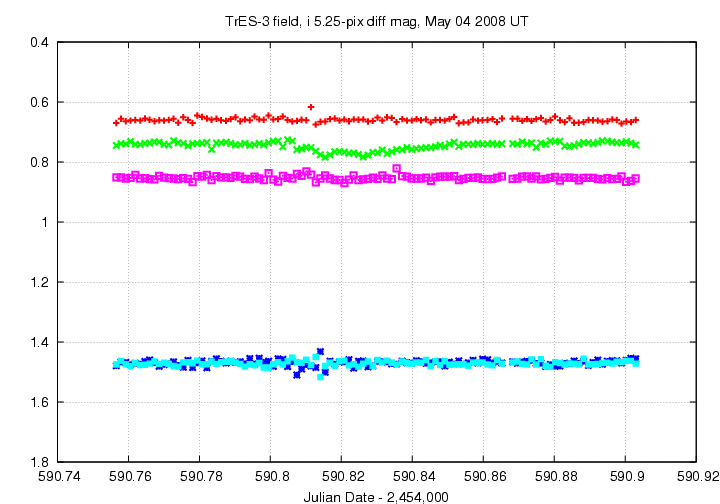
In this closeup, I have shifted the data for two comparison stars to move them closer in magnitude to the target.
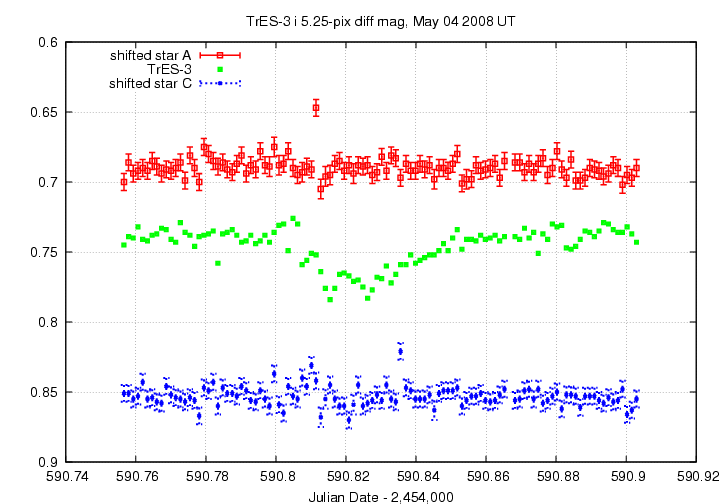
Note that a thick bank of clouds moved through the sky just around the time of ingress, so that feature is hard to measure accurately. My eyeball estimate for the ingress is 590.81, and for the egress 590.85.
The transitsearch.org web site was down when I analyzed this data. Justin's notes indicate that ingress should have occurred at 590.803 (a bit earlier than observed?) and egress at 590.861 (later than my estimate).
This pattern confirms the indications from earlier nights,
You can grab the measurements for your own analysis. Below is a table with three flavors of time, plus the differential magnitude of the target and an estimate of the uncertainty in each measurement. I show the first few lines of the file to give you an idea of its format.
# Measurements of TrES-3 made with APO PT, May 4, 2008 UT. # Each exposure 30 seconds long in SDSS i-band; # Tabulated times are midexposure (FITS header time - half exposure length) # and accurate only to +/- 1 second (??). # 'mag' is a differential magnitude based on ensemble photometry # using a circular aperture of radius 5.25 arcseconds. # # UT day JD-2,450,000 HJD-2,450,000 mag uncert May04.75660 4590.75660 4590.75868 0.745 0.006 May04.75793 4590.75793 4590.76001 0.739 0.006 May04.75926 4590.75926 4590.76134 0.740 0.006
Last modified 06/20/2008 by MWR.